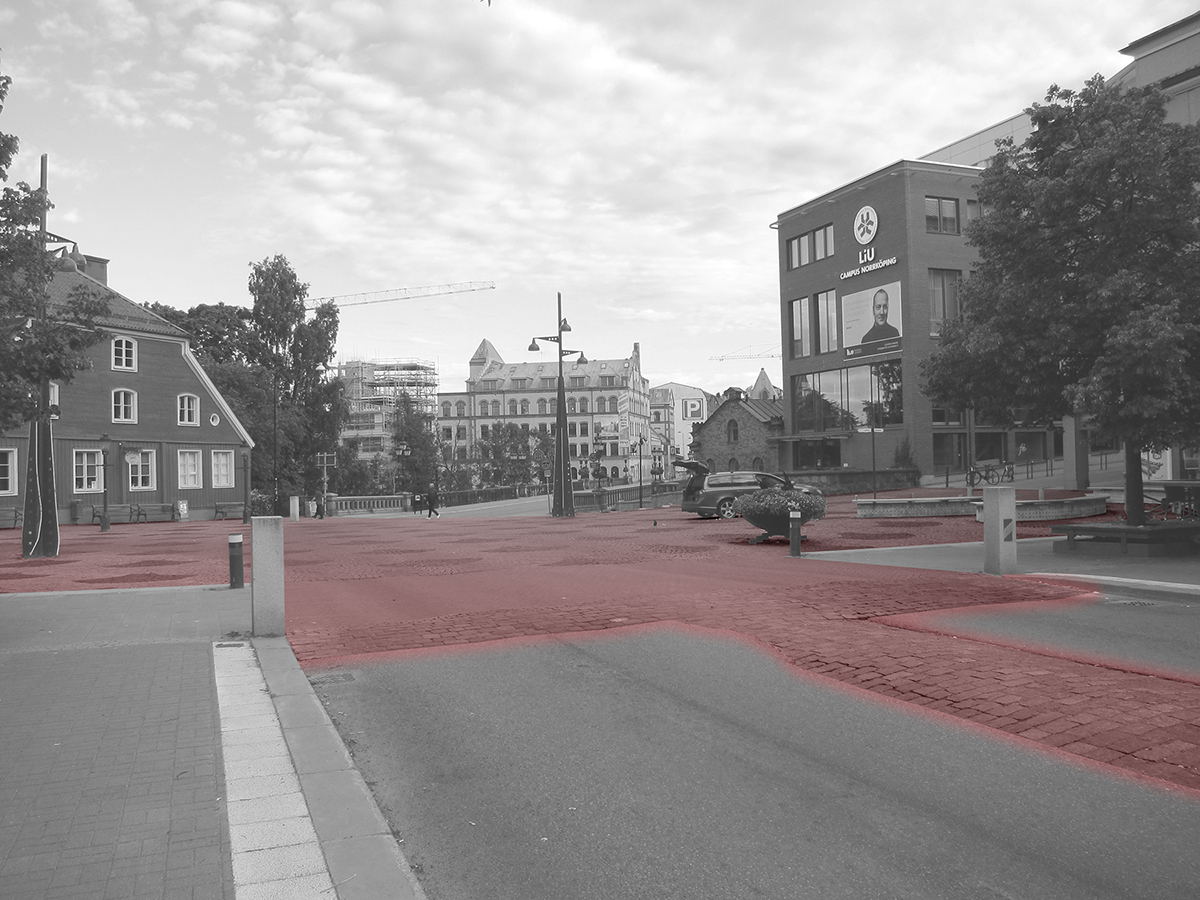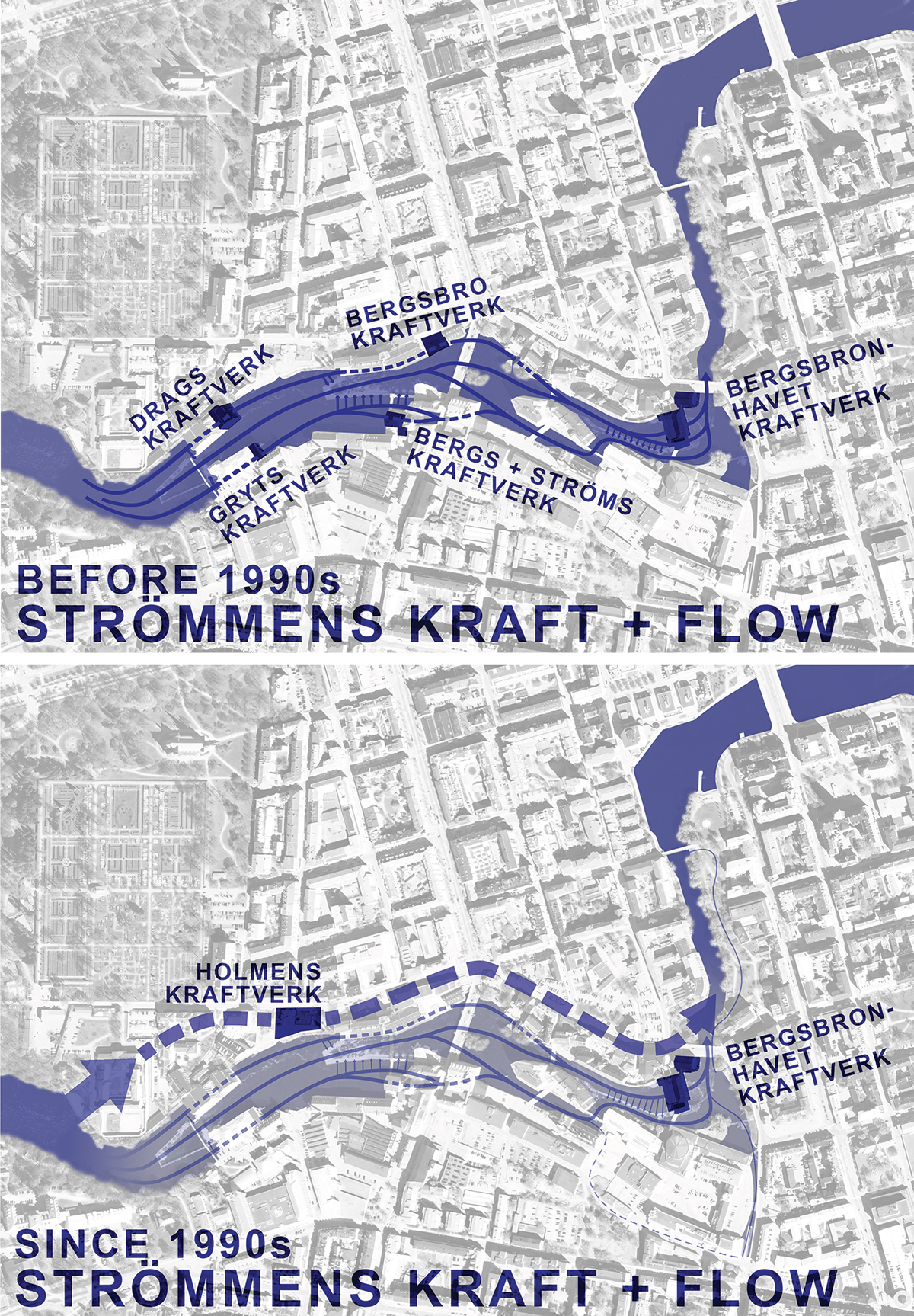
Red granite paving in Holmentorg preserves the footprints of demolished paper mill buildings.

The intersection at Skvallertorget was lifted and repaved in the early 2000s to give priority to pedestrians over vehicular traffic.

Large-scale section through the Motala River in central Norrköping's Industrilandskapet (original actual size measures 45 in x 256 in / 114 cm x 650 cm). The hump in the middle is where the river bottom was raised to preserve the effects of the various waterfalls in the area when a new tunnel and powerplant were built in the 1990s that diverted most of the water.

In the early 1990s Holmen (a 400-year old paper manufacturing company that started in Norrköping) consolidated the majority its hydro-electric generators into a new, below-ground power plant that significantly lowered the surface water of the river. The river bottom was raised in a key location to preserve the effect of the waterfalls along its course. Refer to the section above to see where this work was done.

Section through the highly manipulated Motala River's journey from Lake Vättern to Bråviken and Norrköping's location within it.

The general growth of industrially-zoned land in Norrköping over time contrasts with the contraction and disappearance of industry in the city's Industrilandskapet.

Timeline highlighting key anchors and actors in Norrköping's textile/paper collapse and subsequent culture/knowledge rise.

Figure-ground series of diagrams illustrating the change in use in Industrilandskapet from 1946 just before the industrial collapse to today.

